The Canada–United States border is the longest international border in the world, as well as an important corridor of trade, travel, and cultural exchange between the two countries.
This guide looks at the 13 U.S. states that border that northern line, showcasing the wide range of landscapes and communities between Alaska’s rugged terrain and Mainecoast.
In it, you’ll learn how this line is not a dividing point but a unifying connecting and how it creates a spectacular quilt of natural and human-made beauty for both visitors and inhabitants to enjoy.
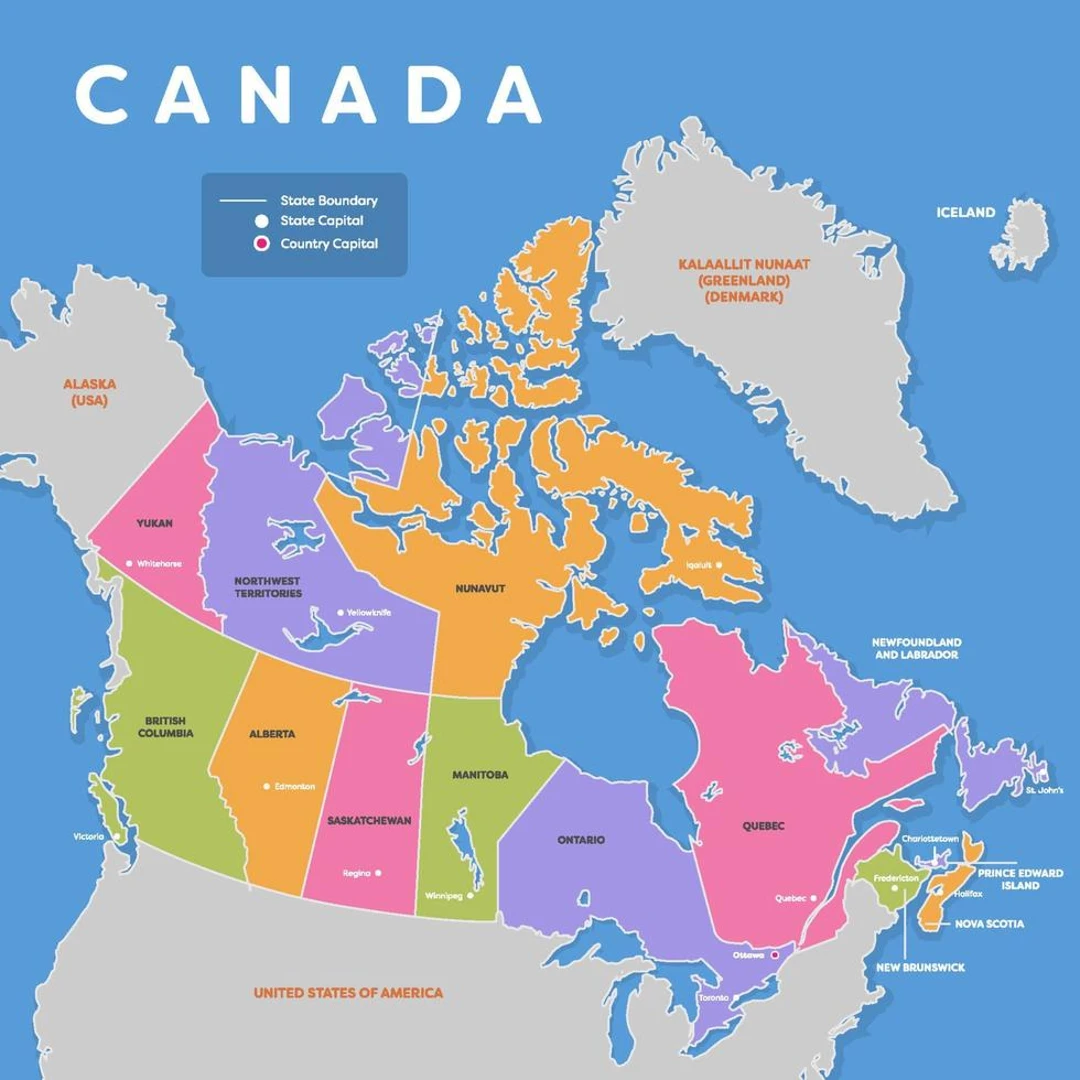
What states border Canada?
There are 13 U.S. states that border Canada and these states provide a wide variety of landscapes and adventures for any traveler.
They are Alaska, Washington, Idaho, Maine, Montana, North Dakota, Minnesota, Michigan, Ohio, Pennsylvania, New York, Vermont, New Hampshire, and Maine.
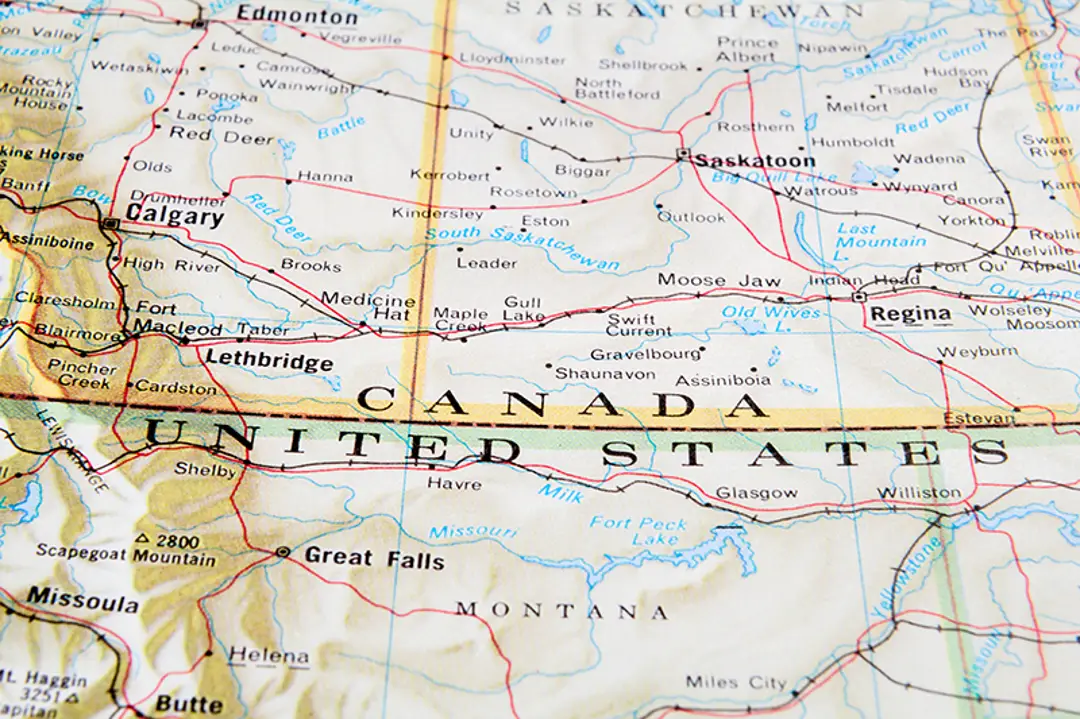
Overview of the U.S.–Canada Border
The border between the United States and Canada is pretty amazing. Measuring approximately 5,525 miles, it is the longest border between two countries in the world.
And the coolest part is that this border is not an imaginary line on a map. It’s a real, living, breathing place where two countries meet.
There are bustling border towns and lush forests and parks to be enjoyed along this unique dividing line.
Not all of that is land border. Most people don’t realize that there are also water borders.
The Great Lakes and coastal waters partially make up the US-Canada border, creating a unique dynamic between the two countries.
This land and water border mix showcases the differences in the regions of the border, from beautiful shorelines to bustling metropolitan areas.
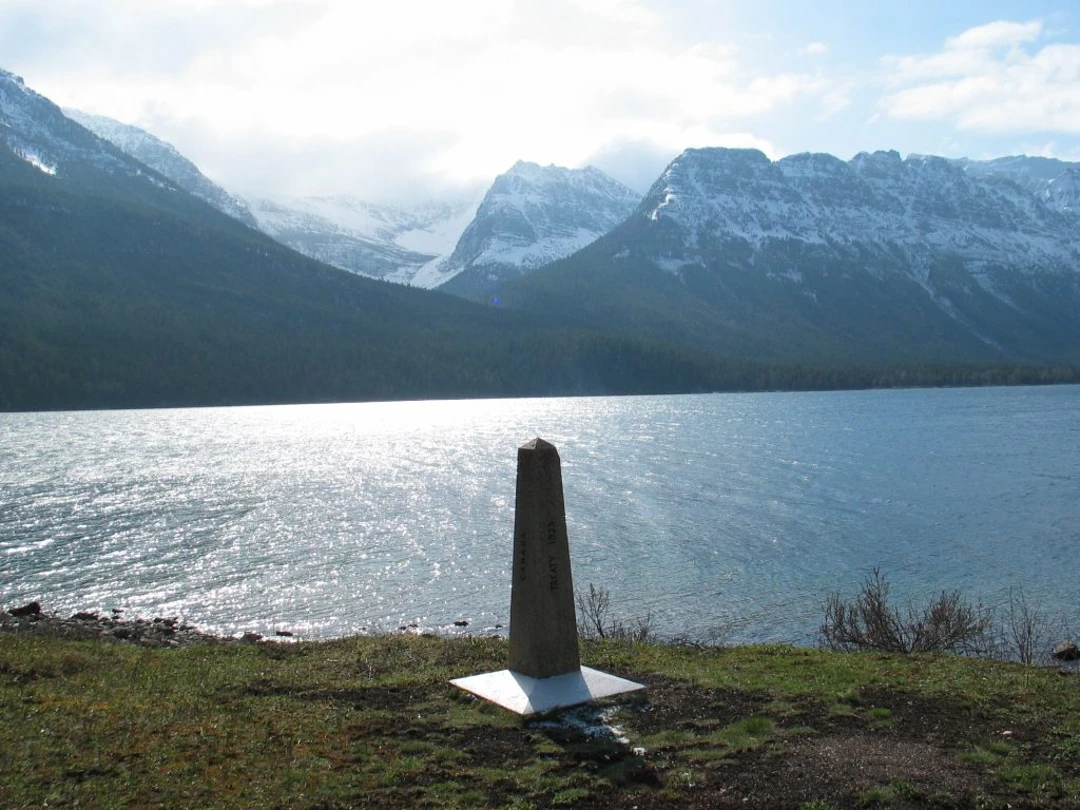
Now, consider how the western coast spreads out as a whole. Each area—western state, middle plains, eastern coastline—has its own taste of the border.
The west brings mountains; the center, endless flatlands; the east, incredible bodies of water and historical significance.
It’s this variety that makes the U.S.-Canada border an interesting place.
Western States That Border Canada
Alaska
Alaska’s border with Canada is pretty remarkable. As the state with the longest U.S.-Canada border, it runs through endless trackless wilderness.
As a result, it crosses some of the wildest and most stunning areas of North America, linking the remote and wild Yukon and British Columbia with Alaska.
It’s a region that attracts adventure travelers looking to experience pure, untamed wilderness.
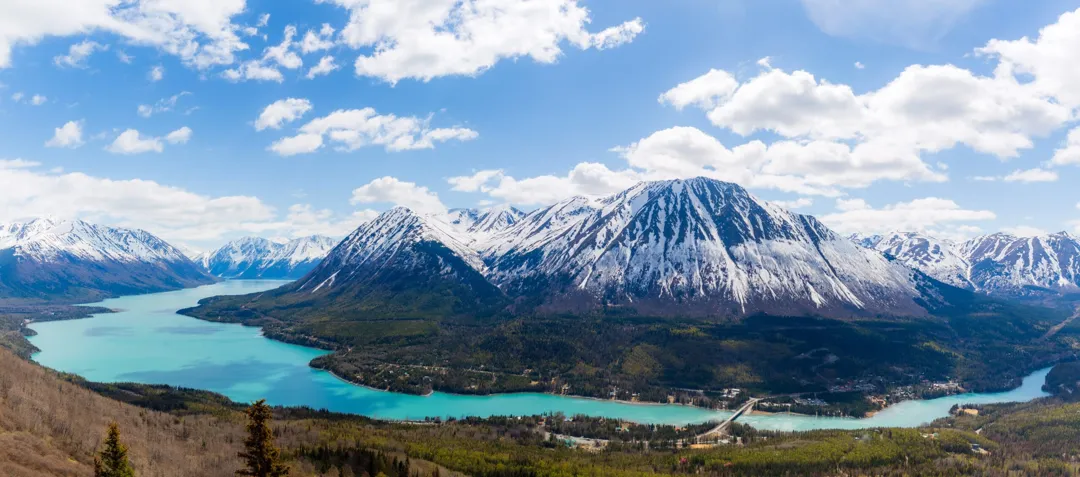
Washington
Washington is a bustling state that borders British Columbia. It’s a common point of entry and departure, with very frequented crossings like Blaine.
And, as a result, they team with trade—trucks full of goods goes through them all the time!
Not to mention the sheer beauty, from the vibrant cityscape of Seattle to the untamed nature of the Pacific Northwest.
It’s a vibrant crossing, full of life and prospects for thousands of travelers and companies.
Idaho
While Idaho’s border is just a fraction of its entire border, it’s a section that carries a lot of the state’s history and wild beauty.
The area of the border with British Columbia is not much more than wilderness area.
It sits back in the mountains and just looks like a pristine area. Not many people visit this section of border and that makes this little piece of border very special.
It’s is a quiet, beautiful area in the state. It’s an area of the state where you go when you want peace and quiet.
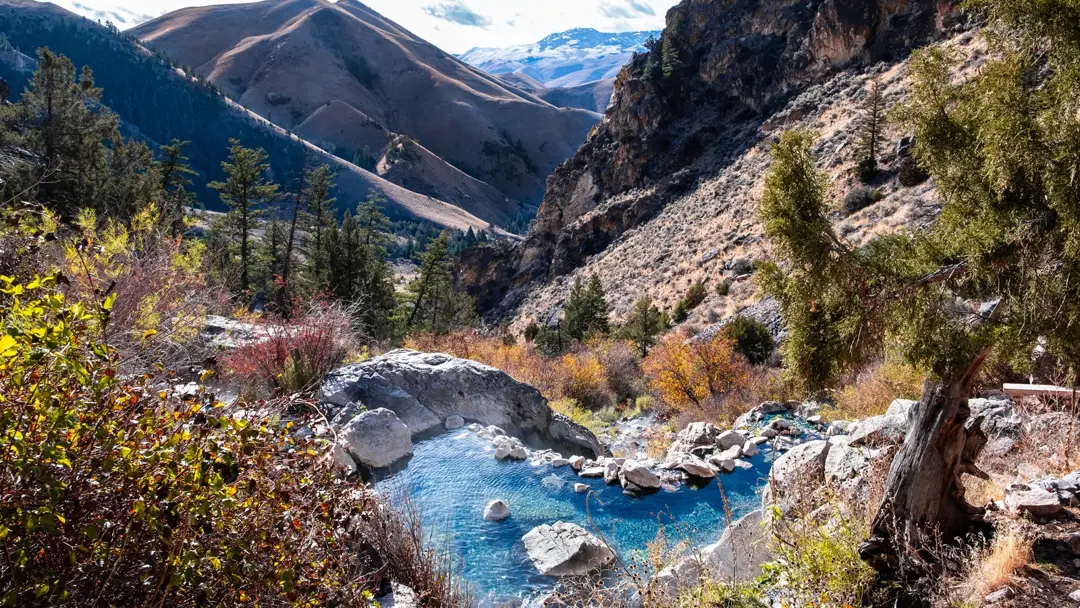
Montana
With three provinces of Canada as neighbors (British Columbia, Alberta, and Saskatchewan), Montana has a long and lovely scenic border.
Mountains, flat plains, and plenty of space can be found along this border, which includes trade and travel hubs, such as Sweet Grass.
The state’s wide-open spaces are simply teeming with chances for year-round adventure activities, and it truly is a place that harnesses the power of nature while creating a sense of community.
Central States That Border Canada
North Dakota
North Dakota has a lively border with Manitoba and Saskatchewan, which is a vital passageway for trade and travel.
Once you crest the last hills and drive onto the flat prairie, you’ll encounter this scene.
The ports of entry, like Pembina’s station, are hectic. Trucks and people are always moving about, giving evidence to the importance of the border.
It’s a border where the prairie ends and business begins, with quiet nature giving way to boisterous activity.
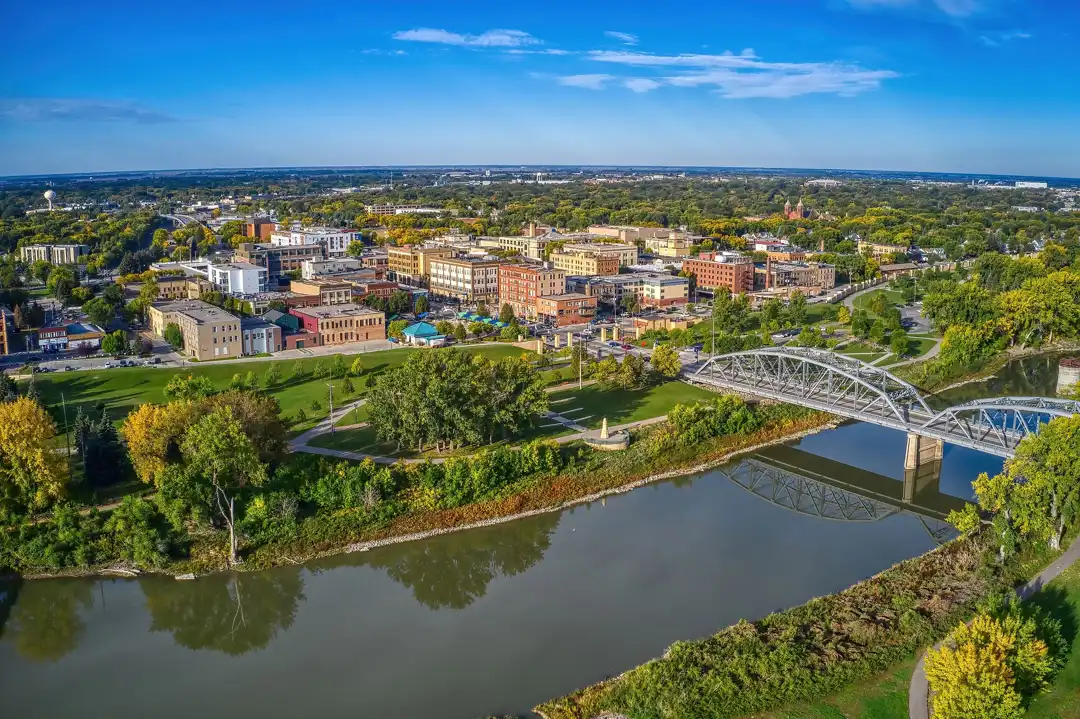
Minnesota
Minnesota shares a border with Canada. It borders Manitoba and Ontario, and there are both land and water border crossings.
One of the most interesting is the Lake of the Woods, as the border goes straight through the water!
This area is not only important for commerce but also a playground for the great outdoors.
The woods and waters here provide hundreds of miles of recreational opportunities, be that fishing or hiking. It’s a wonderful part of Northern America.
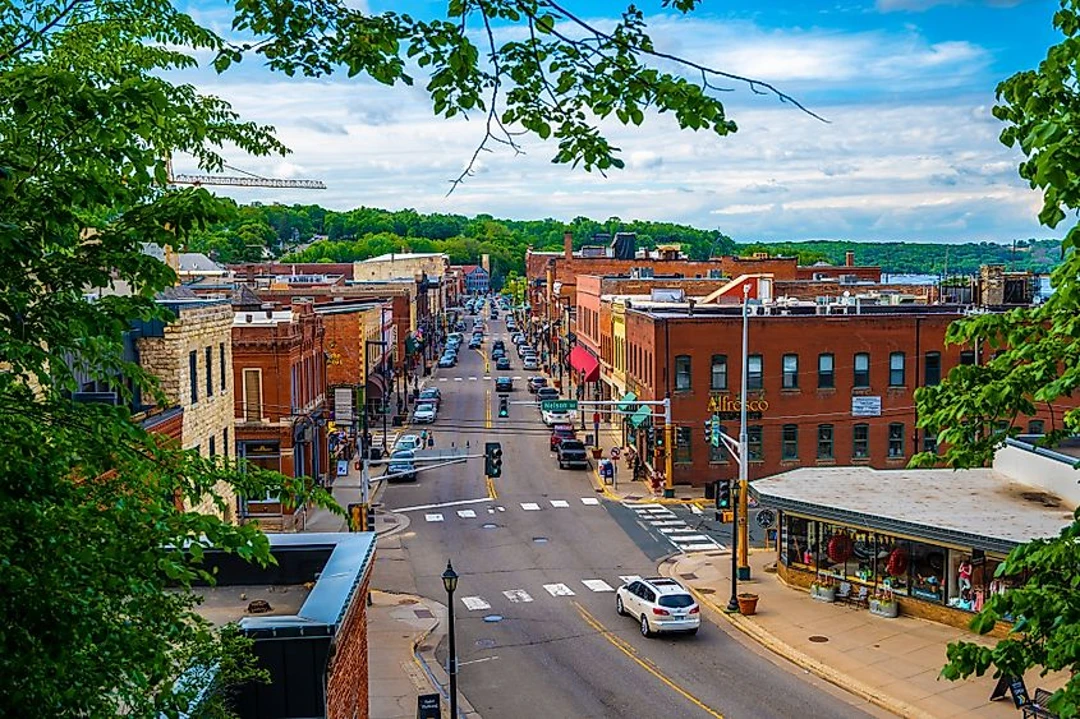
Great Lakes & Eastern States That Border Canada
Michigan
Michigan is a unique neighbor to Canada. Connected to Ontario in the south by land and water borders, as well as the Great Lakes, Michigan boasts parks and industrial towns.
Two of the most important crossings between the two countries are the Ambassador Bridge and the Detroit-Windsor Tunnel.
But whether you’re exploring the tranquil coast of Lake Huronor vibrant Detroit, there is a ton to see and do on the border between Michigan and Canada.
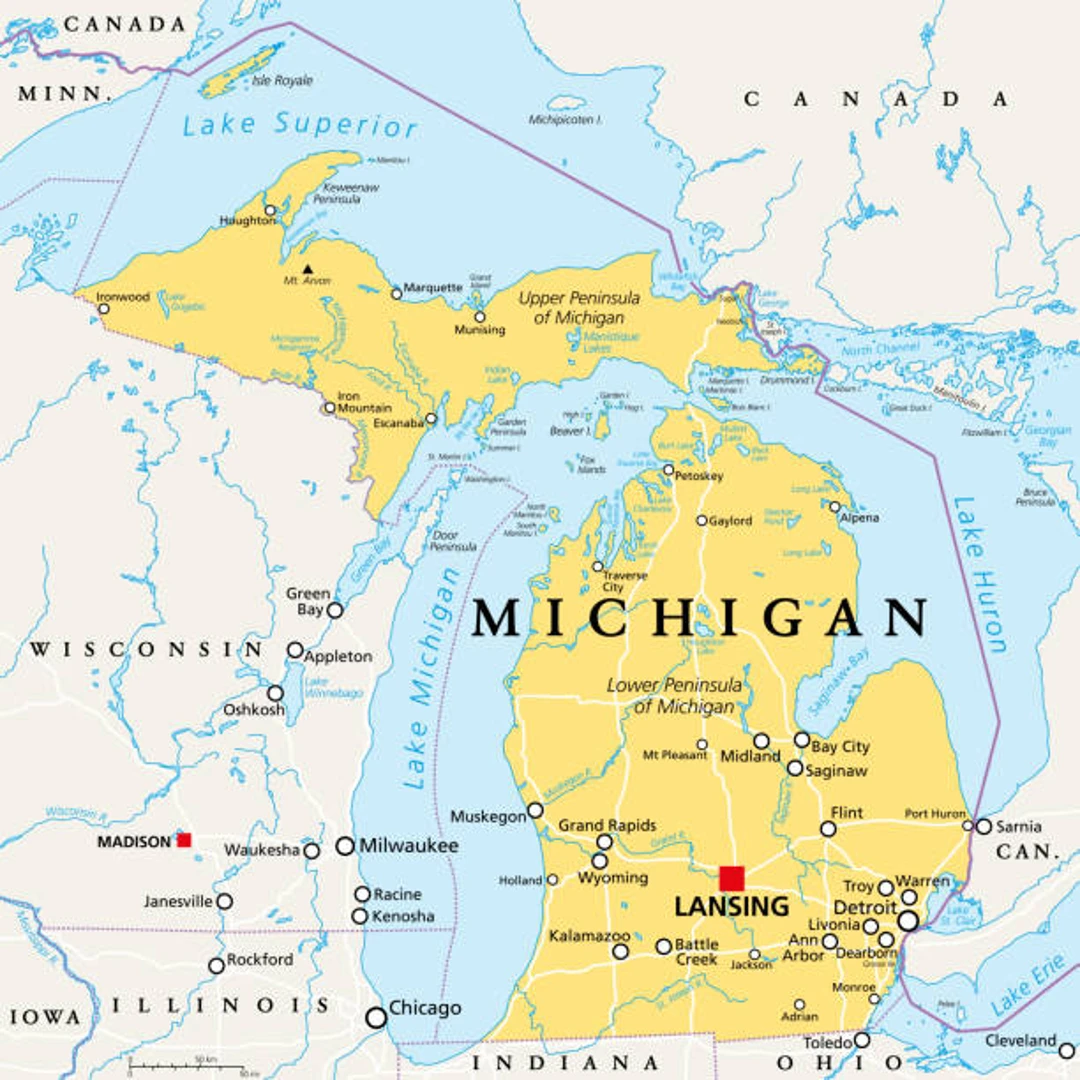
Ohio
One of the other bordering areas of Ohio has with Canada is on Lake Erie. As you can imagine, it is less check pointy and more watery and naturally.
Although it’s not quite a land border, it’s cool that we can connect through Lake Erie and share in those adventures.
You can boat away on this body of water for a pleasant view of lakes and the ports.
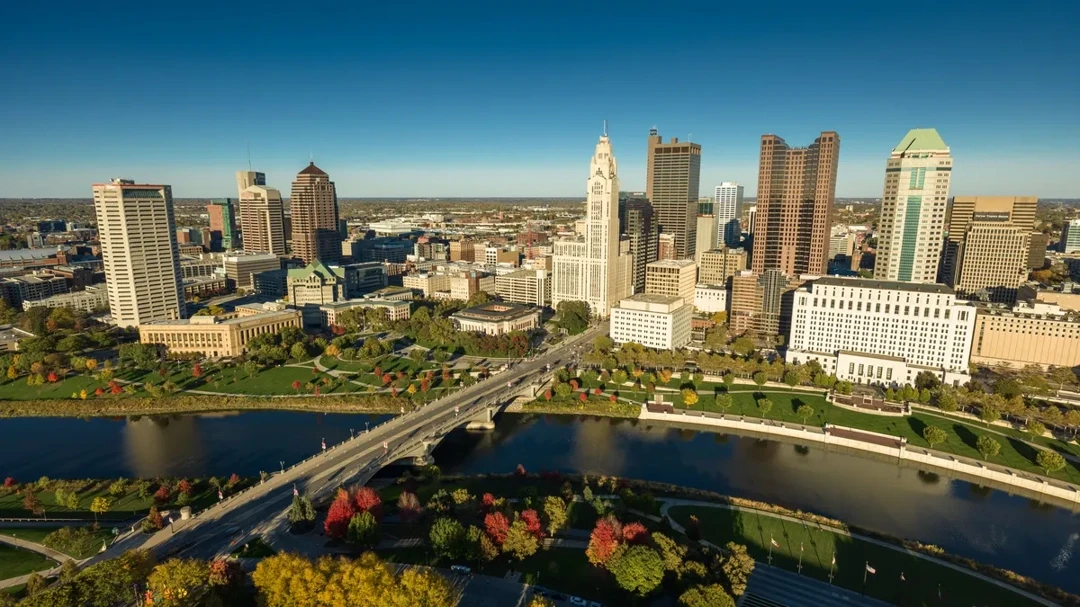
Pennsylvania
Pennsylvania touches Canada at Lake Erie. Technically, it doesn’t border the country by land, but this northern stretch gives Pennsylvania a little international flair.
Erie, the city on the lake, sees itself as a gateway to waters that lie beyond. visitors — particularly those venturing out on to the lake — can enjoy the water’s tranquil presence and feel a bit closer to the distant shores of Canada.
New York
Along this expansive frontier line are New York’s borders with Canada, along both Ontario and Quebec.
Niagara's is one of the most visible and famous borderlands, as the falls bring in millions of tourists a year.
With bustling cities such as Buffalo and natural attractions such as the Thousand Islands, New York’s relationship with Canada is varied and exciting.
This is a busy border full of nature, cities, and activity, making it ideal for travelers wanting a little bit of everything.
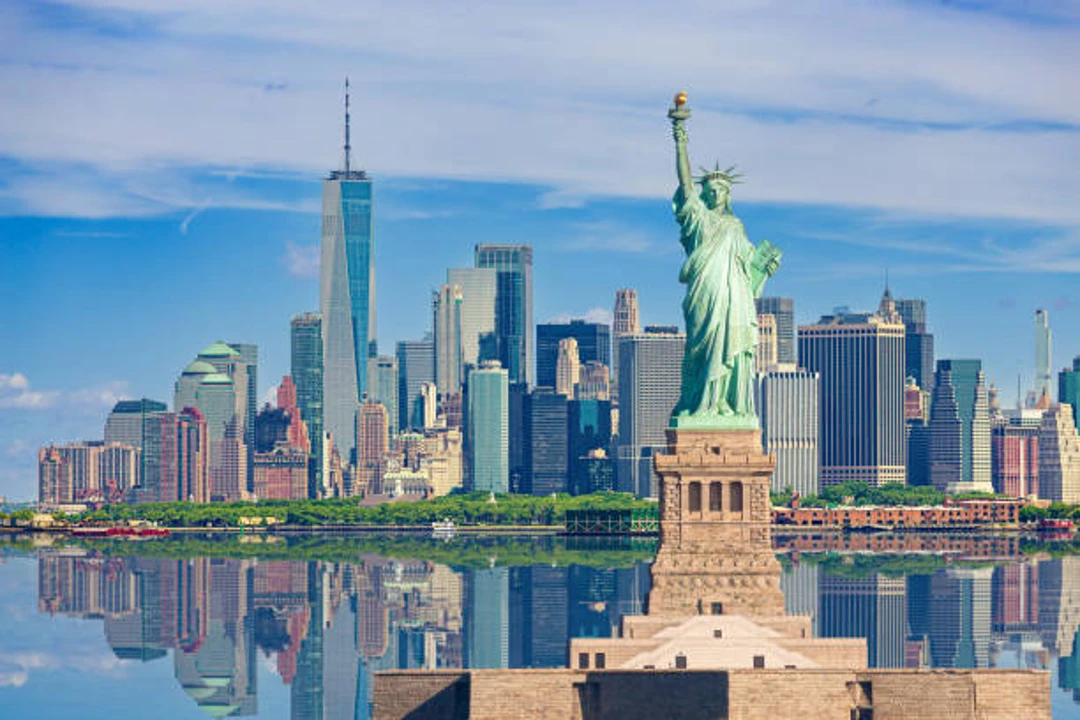
Vermont
The Vermont border with Quebec exudes quintessential New England. The area is green and the towns are tiny and everyone is friendly.
Chances are, you’re going to want to take a picture because all the border towns are just so cute and everyone is just so nice.
It’s an easy way to cross the border. And for nature lovers, the views will make you want to linger just a bit longer.
New Hampshire
The border between New Hampshire and Quebec is short, and feels like a little secret hiding in the mountains.
It’s quiet, bucolic, and a bit on the wild side. The land simply slopes up to Canada, and the region is welcoming.
It’s a wonderful, tranquil way to pass between countries, among nature’s splendor.
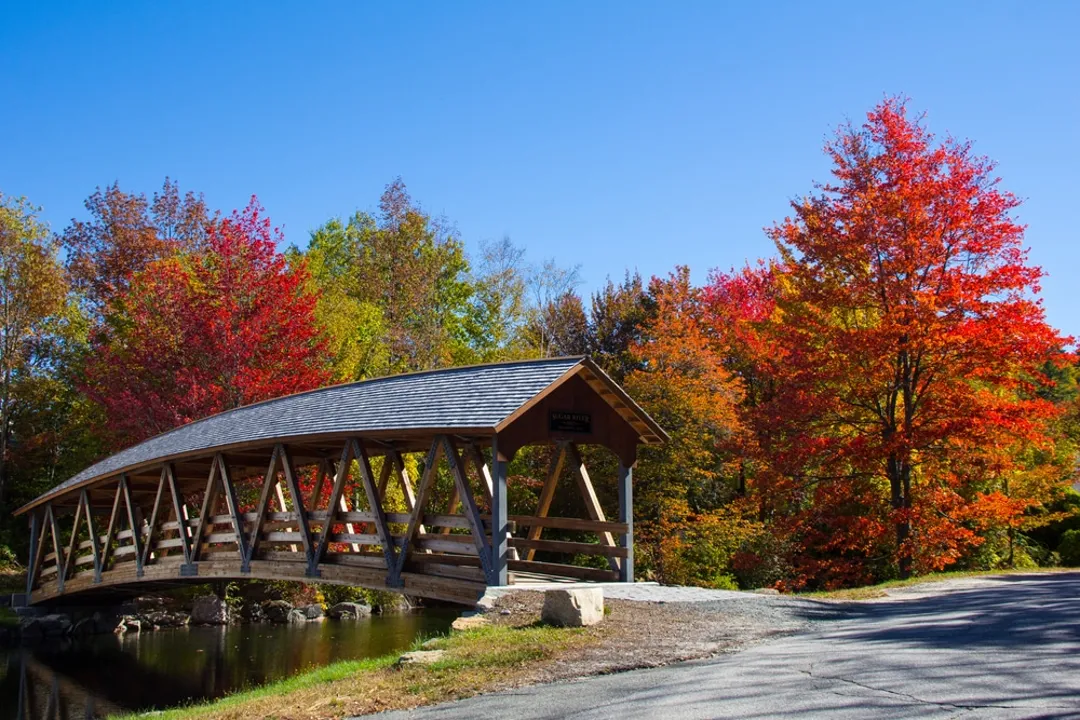
Maine
Maine borders Quebec and New Brunswick for a very long stretch at the edge of the U.S.–Canada.
Its rocky shoreline and thick, forested interior provide the perfect combination blend of adventure and escape.
This border is a playground for lovers of the outdoors, with opportunities for kayaking, hiking, and wandering the wilderness.
When it comes to its relationship with Canada, it’s all about the great outdoors and a little rough-around-the-edges appeal.
Importance of the Canada–U.S. State Borders
Economic Ties
The border between Canada and the U.S. is one of the busiest trade borders in the world. It’s a superhighway of sorts for products being shipped between the two nations.
Each year, billions of dollars in goods go to and fro, benefiting both countries’ economies. However, it’s not just about business—tourism is also popular here.
People will cross the border to go shopping, visit a friend, or check out a destination. All of this activity makes the border towns very lively and bustling.
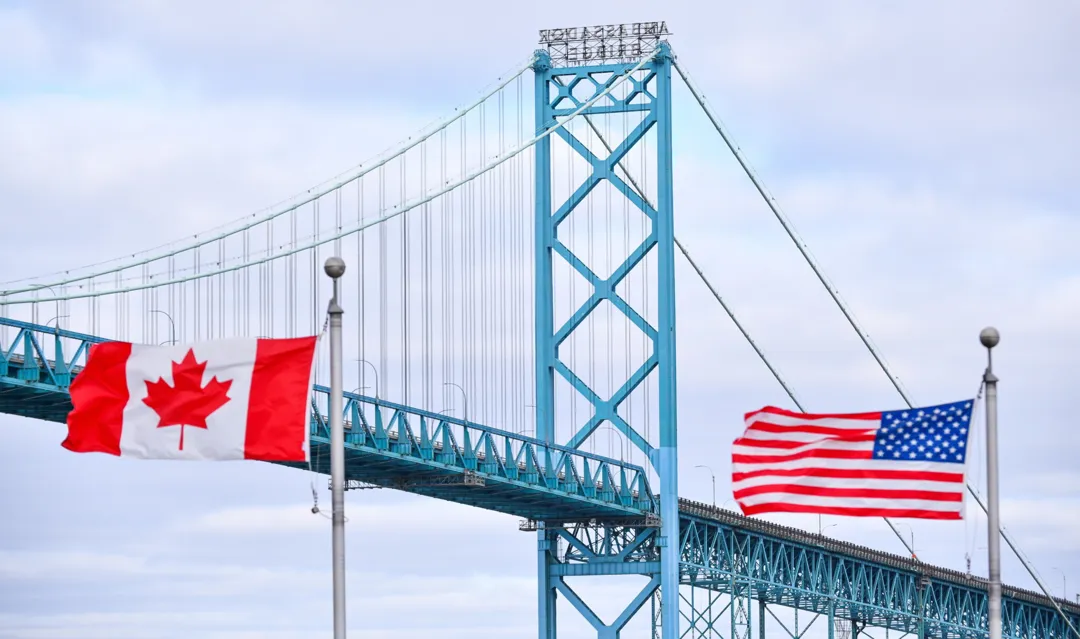
Cultural Exchange
But the US-Canadian border is more than just a physical barrier. It’s a conduit between two cultures.
You’ll see bilingual villages that uphold customs from either country; you’ll see festivals and activities that exist on both sides of the border, linking people.
This mingling of cultures has created some great friendships and relationships.
Natural Attractions
If you’re an outdoors lover, traveling along the border of the United States and Canada will deliver a treasure trove of things to see and do.
The Rocky Mountains, the Great Lakes, and simply so much more. The variety of scenery makes sure there is something for everyone.
Whether you like to hike, go for a boat ride, or just watch the sunset, you won’t be disappointed with the natural environment I promise.
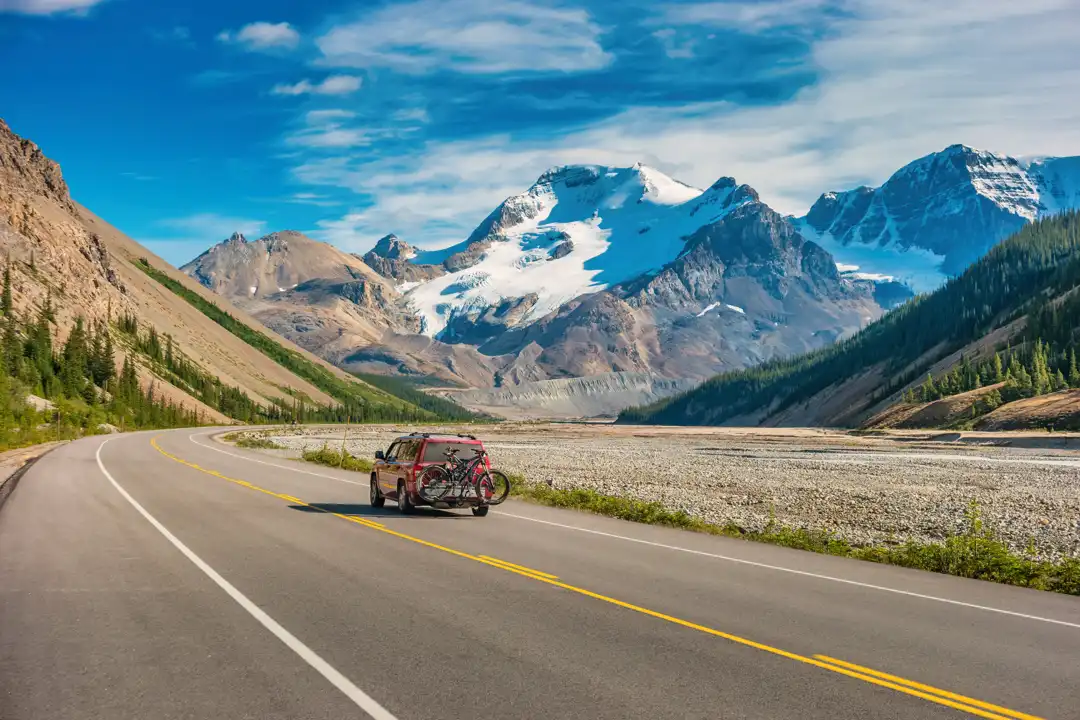
FAQ
1. Which U.S. border state has the highest population living near Canada?
Michigan, especially around Detroit, near Windsor, Ontario.
2. Is there a ferry between U.S. border states and Canada?
True, ferries run between Michigan and Ontario and Washington and British Columbia.
3. Can you visit a U.S. state that borders Canada without crossing?
Yes, you’re able to see Canada over the water from places like Detroit (MI), Buffalo (NY), and Blaine (WA).
Conclusion
If you know the US states that Canada borders, you gain more than geography—you get the sheer diversity of terrains and cultures that make up the world’s longest international border.
From coast to coast, these 13 states span wilderness, lakes, mountains, and countless cities and towns along the border.
For visitors, the border between the US and Canada is more than simply the boundary line on a map. It’s a chance to see, feel, and absorb the quirky, intertwined life that the two neighbors share.
